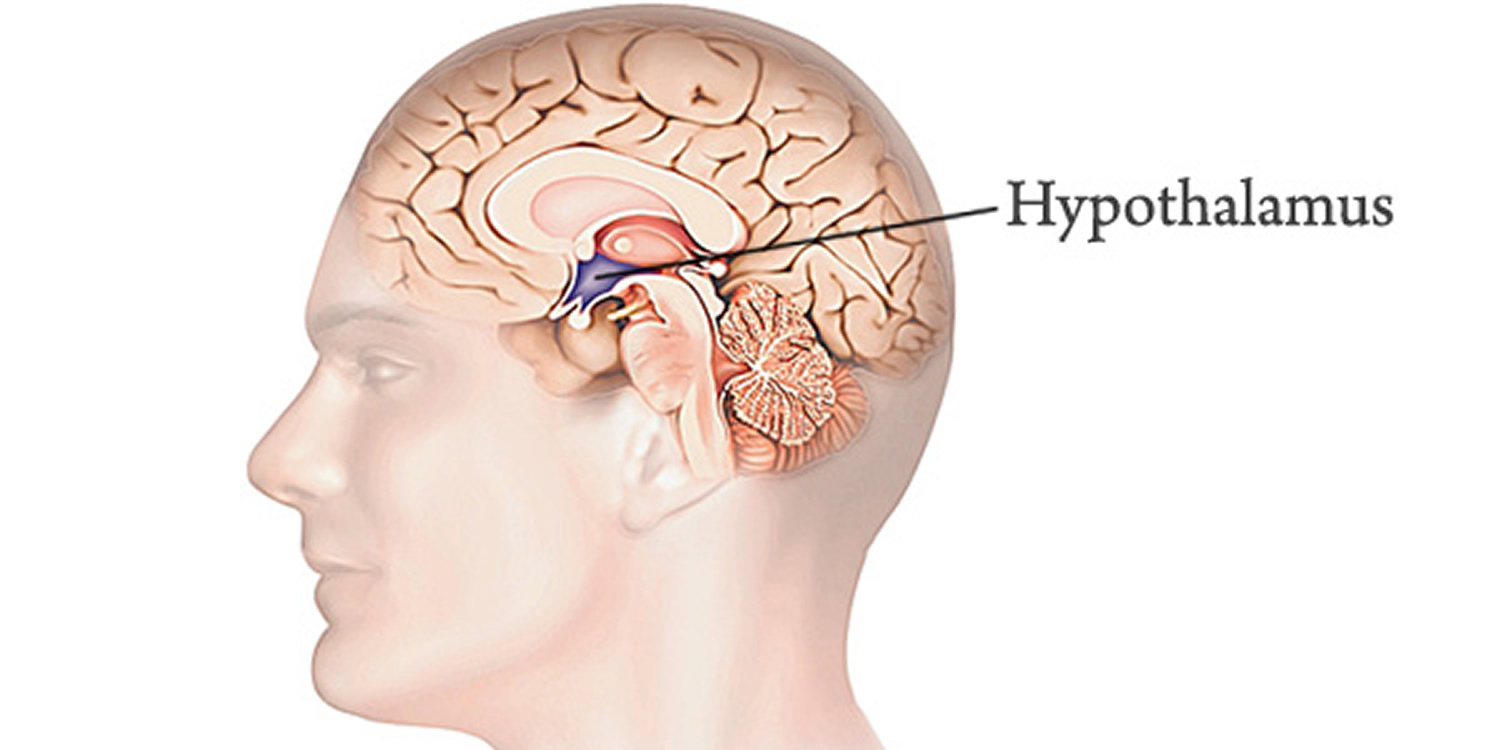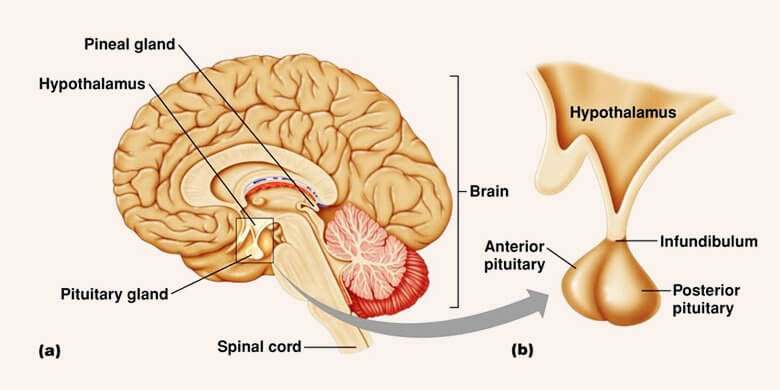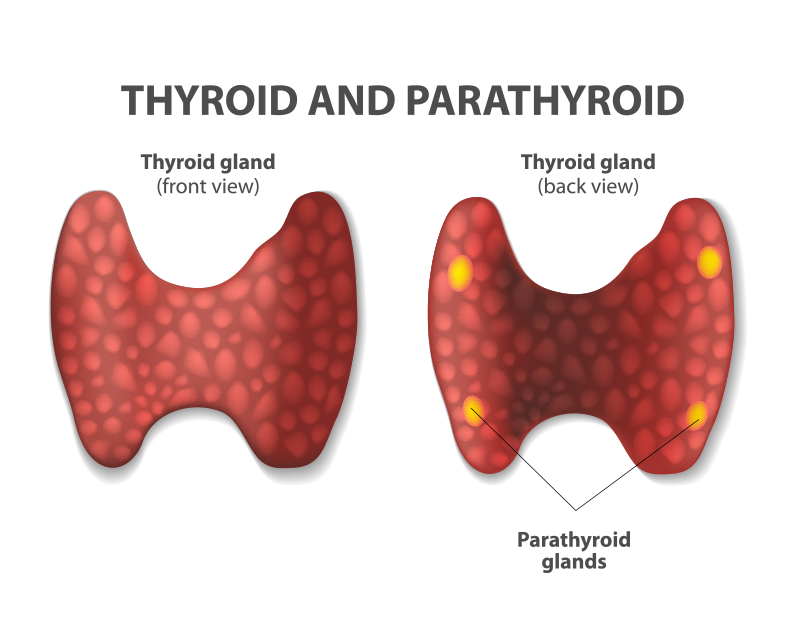How is your mood today? Are you happy? Are you sad? Angry? Hangry, maybe? Or simply moody? Why is it that our mood changes every day, every minute, every second? What regulates our mood? What regulates our hormones? Well, the endocrine system in the humans regulate moods, sleep, hormones, etc. Let us study more about endocrine system below.
Suggested Videos
There are two types of glands in our body- exocrine and endocrine. The exocrine glands pour their secretions into the bloodstream via ducts whereas the endocrine glands pour their secretions into the bloodstream. The endocrine system in humans is made up of the endocrine glands and their secretions known as hormones. Hormones are chemical messengers that are responsible for regulating various functions of the body such as cell growth, metabolism, reproduction and sexual changes.
What are hormones?
Before we can learn about the endocrine system, different organs, and glands present in it, we should understand what are hormones. These secretions of the endocrine glands are of two types that are chemical in nature: Protein and Steroid. Protein hormones are water soluble while the steroid hormones are not. The hormones are regulated by two mechanisms: Positive and negative feedback mechanisms.
The endocrine system is a complex system made up of the endocrine gland which secretes a hormone or a stimulating hormone. This finds the target organ and bind to the target receptors on it and brings about the required action. This forms the positive loop. Sometimes, when there is excess or more than the required amount of the hormone in the bloodstream, a negative feedback is initiated to prevent further secretion of the hormone.
Browse more Topics under Chemical Coordination And Integration
Endocrine Glands
There are many glands and organs that function as endocrine glands- Hypothalamus, pituitary, thyroid, parathyroid, thymus, pancreas, adrenals, Gonads(Ovaries and Testes).

( Image source: qfood.eu)
Hypothalamus

(Image Source: healthjade.com )
This gland is present in the brain located at a level lower than the thalamus. It functions as the thermostat of the body as it is responsible for the regulation of body temperature. As part of the endocrine system, the hypothalamus has a control over the pituitary and indirectly over the other glands as well.
The hypothalamus contains special secretory cells known as the neurosecretory cells which secrete releasing and inhibitory hormones that act on the pituitary. The various releasing and inhibitory hormones secreted by the hypothalamus are:
- Growth Hormone Releasing Hormone
- Growth Hormone Inhibiting Hormone
- Gonadotropin Releasing Hormone
- Corticotropin-Releasing Hormone
- Thyroid Releasing Hormone
- Oxytocin
- Antidiuretic Hormone
These hormones act on the pituitary to release their corresponding hormone that further goes to act on the target gland or organ.
Pituitary Gland
The pituitary gland is present in the brain attached to the hypothalamus inferiorly. The pituitary gland is called as the hypophysis. It is divided anatomically and functionally into two lobes- the anterior pituitary called the adenohypophysis and the posterior pituitary known as the neurohypophysis.

( Image Source: organsofthebody.com)
Anterior lobe of the pituitary gland
The anterior lobe of the pituitary gland releases 7 hormones which are:
- Growth Hormones(GH): It brings about growth and repair and affects all the cells in the body.
- Thyroid Stimulating Hormone(TSH)- This hormone stimulates the thyroid gland to secrete thyroxine.
- Adrenocorticotropic Hormone(ACTH)- This hormone stimulates the adrenal cortex portion of the adrenal glands.
- Follicle Stimulating Hormones(FSH)- This hormone stimulates the gonads in both the males and females to produce sperm and egg respectively.
- Luteinizing Hormone(LH)- This hormone stimulates the gonads(ovaries and testes) to produce their respective sex hormones.
- Prolactin: The main action of this hormone is on the mammary glands to produce milk.
Posterior lobe of the pituitary gland
Unlike the glandular anterior lobe, the posterior lobe is made up of nervous tissue. It produces one hormone is the males and two in the females.
- Oxytocin: This hormone is released by the pituitary during childbirth that assists in dilating the cervix to allow easy passage of the child through the vaginal canal.
- Anti-diuretic hormone: This hormone is also called vasopressin and it acts on the kidneys to stimulate re-absorption of water.
Thyroid Gland
The thyroid gland is present in the lower part of your neck. It is a butterfly-shaped gland and lies in close approximation to the trachea or the windpipe. The thyroid releases three hormones:
- Thyroxine or T4
- Triiodothyronine or T3
- Calcitonin

( Image source: bolickclinic.com )
T3 and T4 affect metabolism in the body whereas calcitonin is responsible to reduce the calcium levels in the blood.
Parathyroid Glands

( Image Source: endocpa.com )
The parathyroid glands are found on the posterior wall of the thyroid gland and are 4 in number. They release a hormone called the parathormone (PTH) that increases the blood calcium levels when the levels drop. It counteracts the action produced by calcitonin.
Thymus
It is a gland that is predominantly found in children and begins to reduce in size as the individual grows old. This gland is responsible for producing T- lymphocytes till the immune system of the child grows and matures.
Pancreas

( Image Source: drugabuse.com )
This gland is found in close proximity to the stomach in the abdominal cavity. The pancreas is said to contain both endocrine and exocrine cells and so it is called as a heterocrine gland. The endocrine part of the pancreas is made up of cells known as the islets of Langerhans. The islets consist of two types of cells- alpha and beta. While the exocrine part is responsible for secreting enzymes for digestion, the endocrine part is responsible for controlling blood sugar levels. The alpha cells of the pancreas release glucagon that increases the blood sugar levels. The beta cells of the pancreas release insulin that is said to reduce the blood sugar levels.
Adrenal Glands

( Image Source: hopkinsmedicine.org )
These glands are also known as the suprarenal glands as they are found superior to the kidneys. They are two in number and are divided into two layers: Adrenal Cortex and Adrenal Medulla.
Adrenal Cortex: The adrenal cortex secretes release the steroid hormones known as corticosteroids. Corticosteroids are of two types: Glucocorticoids and Mineralocorticoids.
- Glucocorticoids(cortisol and cortisone) are responsible for regulating glucose metabolism and are also said to be anti-inflammatory in nature.
- Mineralocorticoids(aldosterone) are responsible for mineral absorption in the kidneys.
Few androgens are also produced in the adrenal cortex.
Adrenal Medulla: It releases epinephrine(adrenaline) and norepinephrine(noradrenaline). These hormones are released by the adrenal medulla on any form of sympathetic stimulation. Adrenaline is known as the ‘fight and flight’ hormone for the reason that it is produced in situations of ‘fight or flight’. Adrenaline increases the heart rate, body temperature, pulse rate, causes increased sweating, increased metabolism etc. Noradrenaline increases the effect of adrenaline on the body.
Gonads
The gonads are made up of Ovaries in the females and testes in the males. Each of these organs releases hormones to affect the sexual growth and reproduction.
- Ovaries: Locates superior to the uterus in females in the pelvic cavity, they are two in number. They release the female sex hormones- estrogen and progesterone. Estrogen is considered to be the primary sex hormone in females while progesterone plays an important role in ovulation and pregnancy.
- Testes: The testes release the male sex hormone known as the testosterone at the time of puberty. This causes the development of secondary sexual characters in males and also the production of sperms.
In addition to these specific endocrine glands and organs, many other organs produce small amounts of hormones.
Question for You
Q: Which endocrine gland releases the ‘Fight or Flight’ hormone?
(a) Adrenal Cortex (b) Adrenal Medulla
(c) Pituitary gland (d) Thyroid gland
Sol. (b) Adrenal Medulla. The adrenal gland is divided into two layers: Adrenal cortex which secretes glucocorticoids and mineralocorticoids and the adrenal medulla secretes adrenaline and noradrenaline. Adrenaline is also called the ‘fight or flight’ hormone.






Leave a Reply